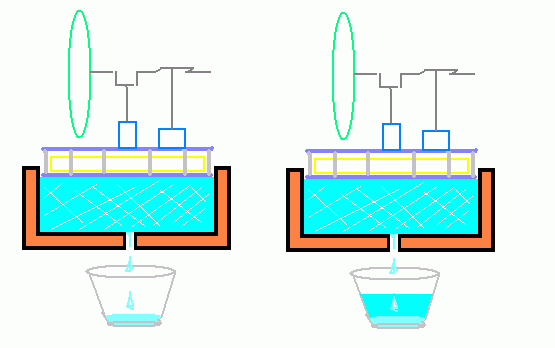Well...Jack wrote: ↑Thu Dec 07, 2023 10:29 pm I like your theories!
I do agree with the cooling by expansion part. It would take a lot of testing to get it right though. Especially for it to be a closed cycle. Because if it doesn't cool down enough you end up with continually hotter and hotter cycles. And there isn't very much separation of zones in a rotor, the cold side will heat up pretty fast as well, just from conduction.
I suppose that could be a problem, but there are materials with very low heat conductivity. Also,
Well, take this experiment I did recently:
https://youtu.be/LG09AXAjpio?si=l2rEo6Pib-XARWlA
Exactly why, I'm not entirely certain, but I'm heating the hot side of the engine almost continuously with a propane torch. That's about 3,500° F.
Styrofoam has a melting temperature of less than 500° F
I don't think the expansion side (power cylinder) ever got anywhere near hot enough to melt the Styrofoam, but at any rate, however hot it may have gotten, INSULATED, with no external cooling, the engine kept on running. The heat never built up enough to melt the Styrofoam, if it ever built up at all, which it seems never happened.
After making that video, I removed the Styrofoam and the power cylinder still felt cool to the touch.
So... To me that looks like by expansion cooling alone (including conversion of heat to "work"), that is, with no external cooling, the engine was able to maintain a temperature difference of at least a few thousand degrees, seemingly indefinitely.
My personal opinion, based on a lot of observations and experiments, is that these engines act like heat pumps or a vapor/compression/expansion refrigeration system.
While expanding into the power cylinder, the working fluid is becoming cold enough to absorb heat away from the cylinder walls in the same way the expanding gas (refrigerant) passing through an expansion valve draws heat away from the walls of the evaporator tubing.
So if some heat is conducted, if cooling is actually taking place, the little bit of heat that might be conducted across a mostly non-conductive medium might be inconsequential.
Not sure what you mean or what the purpose of that would be....
I would love to find a way to run one rotor inside another. As that would solve a few issues for my plan. So if you have any thoughts on that I'd be happy to hear/read them.

